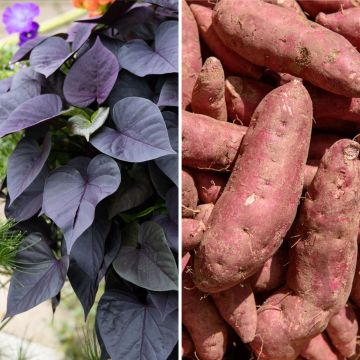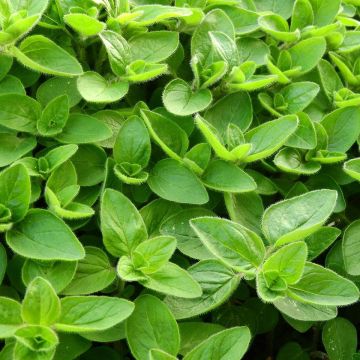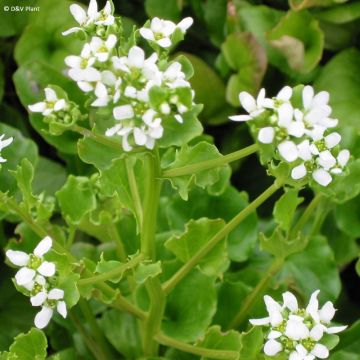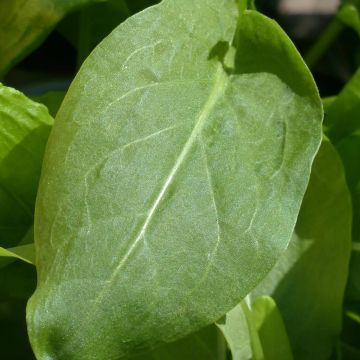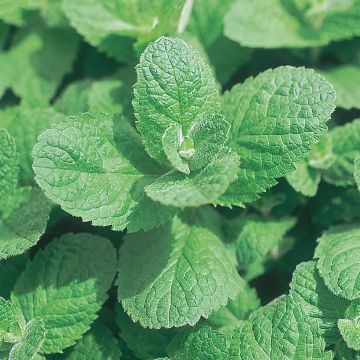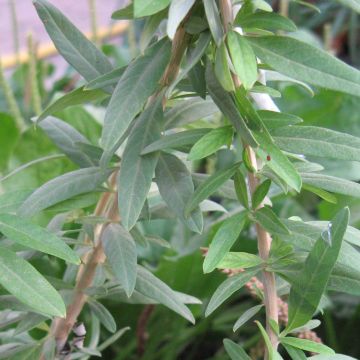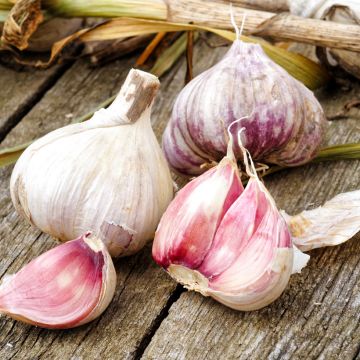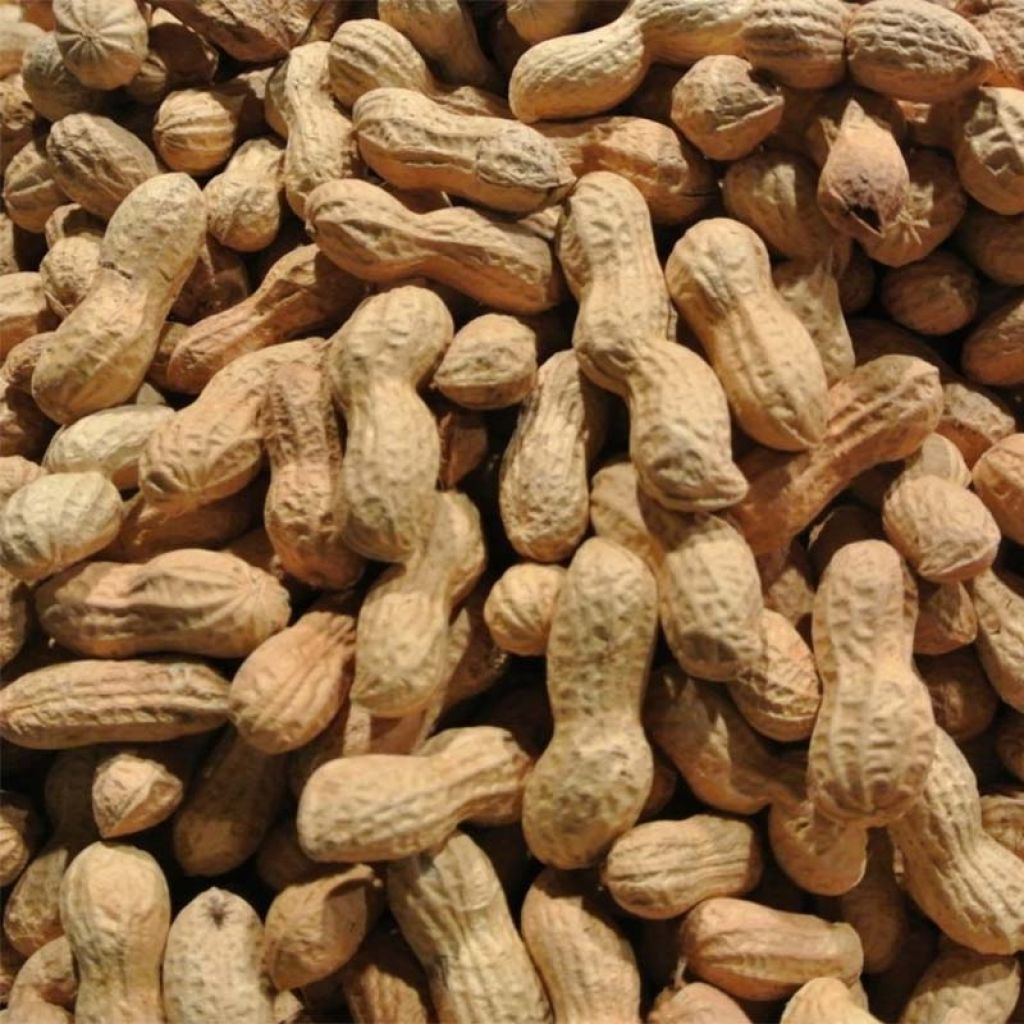

Arachis hypogaea - Peanuts
Arachis hypogaea - Peanuts
Arachis hypogaea
Peanut, Groundnut, Earthnut, Monkey nut, Pinder, Earth Almond
Special offer!
Receive a €20 voucher for any order over €90 (excluding delivery costs, credit notes, and plastic-free options)!
1- Add your favorite plants to your cart.
2- Once you have reached €90, confirm your order (you can even choose the delivery date!).
3- As soon as your order is shipped, you will receive an email containing your voucher code, valid for 3 months (90 days).
Your voucher is unique and can only be used once, for any order with a minimum value of €20, excluding delivery costs.
Can be combined with other current offers, non-divisible and non-refundable.
Why not try an alternative variety in stock?
View all →This plant carries a 6 months recovery warranty
More information
We guarantee the quality of our plants for a full growing cycle, and will replace at our expense any plant that fails to recover under normal climatic and planting conditions.
Description
Peanuts are the seeds of the peanut, an annual herbaceous plant that grows to a height of 50 cm (20in). They are contained in pods with a wrinkled beige skin. The flowers of the peanut have the particularity of burying themselves in the soil after fertilization to form the pods.
Peanuts are cultivated for their seeds, or as ornamental plants. They are an annual herbaceous plant, 50 cm (20in) tall, that produces orange-yellow flowers from May to July. The pollinated flowers have the particularity of burying themselves in the soil after fertilisation to form the fruits. Indeed, stalks carrying ovaries, called gynophores, will develop and bend to bury themselves a few centimetres underground. These are indeed fruits, even though they are harvested like tubers. The pods containing the peanuts are located 3 to 5 cm (1 to 2in) underground.
Originally from Mexico, peanuts thrive in warm climates. They are an oilseed plant, cultivated in large quantities to produce peanut oil. In the vegetable garden, they are grown in open ground in regions with hot summers, or in pots for cooler regions.
Fresh peanuts can be boiled in water or roasted in a pan or oven. They can also be ground to make peanut butter, which can be used in savoury or sweet recipes. Peanuts are rich in trace elements, but their consumption can sometimes cause allergies.
Harvesting: peanuts are harvested at the end of summer, from August to early October, when the foliage turns yellow. The pods should be brown and wrinkled. Dig up the entire plant and harvest the pods. Let them dry in the sun or, if the weather doesn't allow it, place them in a hot oven for about ten minutes without shelling them.
Storage: pods can be stored for 3 to 4 months in an airtight container in the refrigerator. Once roasted and salted, they can be stored for 2 to 3 months in a dark and dry place.
Gardener's tip: Peanuts belong to the Fabaceae family, like beans, peas, and lentils. Grow this legume as a green manure to enrich the soil with nitrogen.
Report an error about the product description
Harvest
Plant habit
Foliage
Other Vegetable plants by variety
View all →Planting and care
In the ground: Peanuts like fertile, light and well-drained soils. Choose a sunny and sheltered spot. Loosen the soil deeply. Space the rows 40 cm (16in) apart and plant the peanut plants every 30 cm (12in) in the row.
When the plants reach 20 cm (8in), hill up the feet. Hoe and weed regularly, especially at the beginning of the cultivation. The soil should be loose to allow the gynophore to penetrate into the ground. Water once a week and then stop watering when the pods form. In autumn, protect the plants from the cold before winter frosts.
In a pot: Take a pot with a minimum diameter of 30 cm (12in). Fill it with a mix of potting soil and garden soil, then transplant the obtained plants (one plant per pot).
When the plants reach a height of 20 cm (8in), hill up the feet by adding potting soil. Peanut harvest is possible even if it will be low. Be vigilant with mites. Place the pots outdoors during the good weather, in a sunny spot. In winter and before frost, bring the pots indoors and place them in a well-lit area. Peanuts freeze below 0°C (32°F).
Cultivation
Care
Intended location
This item has not been reviewed yet - be the first to leave a review about it.
Similar products
Haven't found what you were looking for?
Hardiness is the lowest winter temperature a plant can endure without suffering serious damage or even dying. However, hardiness is affected by location (a sheltered area, such as a patio), protection (winter cover) and soil type (hardiness is improved by well-drained soil).

Photo Sharing Terms & Conditions
In order to encourage gardeners to interact and share their experiences, Promesse de fleurs offers various media enabling content to be uploaded onto its Site - in particular via the ‘Photo sharing’ module.
The User agrees to refrain from:
- Posting any content that is illegal, prejudicial, insulting, racist, inciteful to hatred, revisionist, contrary to public decency, that infringes on privacy or on the privacy rights of third parties, in particular the publicity rights of persons and goods, intellectual property rights, or the right to privacy.
- Submitting content on behalf of a third party;
- Impersonate the identity of a third party and/or publish any personal information about a third party;
In general, the User undertakes to refrain from any unethical behaviour.
All Content (in particular text, comments, files, images, photos, videos, creative works, etc.), which may be subject to property or intellectual property rights, image or other private rights, shall remain the property of the User, subject to the limited rights granted by the terms of the licence granted by Promesse de fleurs as stated below. Users are at liberty to publish or not to publish such Content on the Site, notably via the ‘Photo Sharing’ facility, and accept that this Content shall be made public and freely accessible, notably on the Internet.
Users further acknowledge, undertake to have ,and guarantee that they hold all necessary rights and permissions to publish such material on the Site, in particular with regard to the legislation in force pertaining to any privacy, property, intellectual property, image, or contractual rights, or rights of any other nature. By publishing such Content on the Site, Users acknowledge accepting full liability as publishers of the Content within the meaning of the law, and grant Promesse de fleurs, free of charge, an inclusive, worldwide licence for the said Content for the entire duration of its publication, including all reproduction, representation, up/downloading, displaying, performing, transmission, and storage rights.
Users also grant permission for their name to be linked to the Content and accept that this link may not always be made available.
By engaging in posting material, Users consent to their Content becoming automatically accessible on the Internet, in particular on other sites and/or blogs and/or web pages of the Promesse de fleurs site, including in particular social pages and the Promesse de fleurs catalogue.
Users may secure the removal of entrusted content free of charge by issuing a simple request via our contact form.
The flowering period indicated on our website applies to countries and regions located in USDA zone 8 (France, the United Kingdom, Ireland, the Netherlands, etc.)
It will vary according to where you live:
- In zones 9 to 10 (Italy, Spain, Greece, etc.), flowering will occur about 2 to 4 weeks earlier.
- In zones 6 to 7 (Germany, Poland, Slovenia, and lower mountainous regions), flowering will be delayed by 2 to 3 weeks.
- In zone 5 (Central Europe, Scandinavia), blooming will be delayed by 3 to 5 weeks.
In temperate climates, pruning of spring-flowering shrubs (forsythia, spireas, etc.) should be done just after flowering.
Pruning of summer-flowering shrubs (Indian Lilac, Perovskia, etc.) can be done in winter or spring.
In cold regions as well as with frost-sensitive plants, avoid pruning too early when severe frosts may still occur.
The planting period indicated on our website applies to countries and regions located in USDA zone 8 (France, United Kingdom, Ireland, Netherlands).
It will vary according to where you live:
- In Mediterranean zones (Marseille, Madrid, Milan, etc.), autumn and winter are the best planting periods.
- In continental zones (Strasbourg, Munich, Vienna, etc.), delay planting by 2 to 3 weeks in spring and bring it forward by 2 to 4 weeks in autumn.
- In mountainous regions (the Alps, Pyrenees, Carpathians, etc.), it is best to plant in late spring (May-June) or late summer (August-September).
The harvesting period indicated on our website applies to countries and regions in USDA zone 8 (France, England, Ireland, the Netherlands).
In colder areas (Scandinavia, Poland, Austria...) fruit and vegetable harvests are likely to be delayed by 3-4 weeks.
In warmer areas (Italy, Spain, Greece, etc.), harvesting will probably take place earlier, depending on weather conditions.
The sowing periods indicated on our website apply to countries and regions within USDA Zone 8 (France, UK, Ireland, Netherlands).
In colder areas (Scandinavia, Poland, Austria...), delay any outdoor sowing by 3-4 weeks, or sow under glass.
In warmer climes (Italy, Spain, Greece, etc.), bring outdoor sowing forward by a few weeks.






























